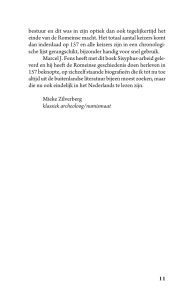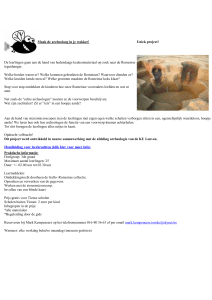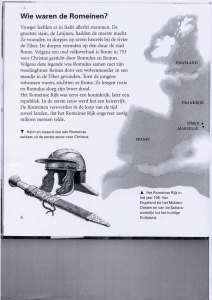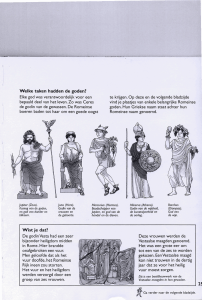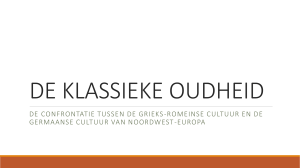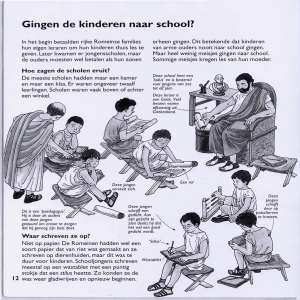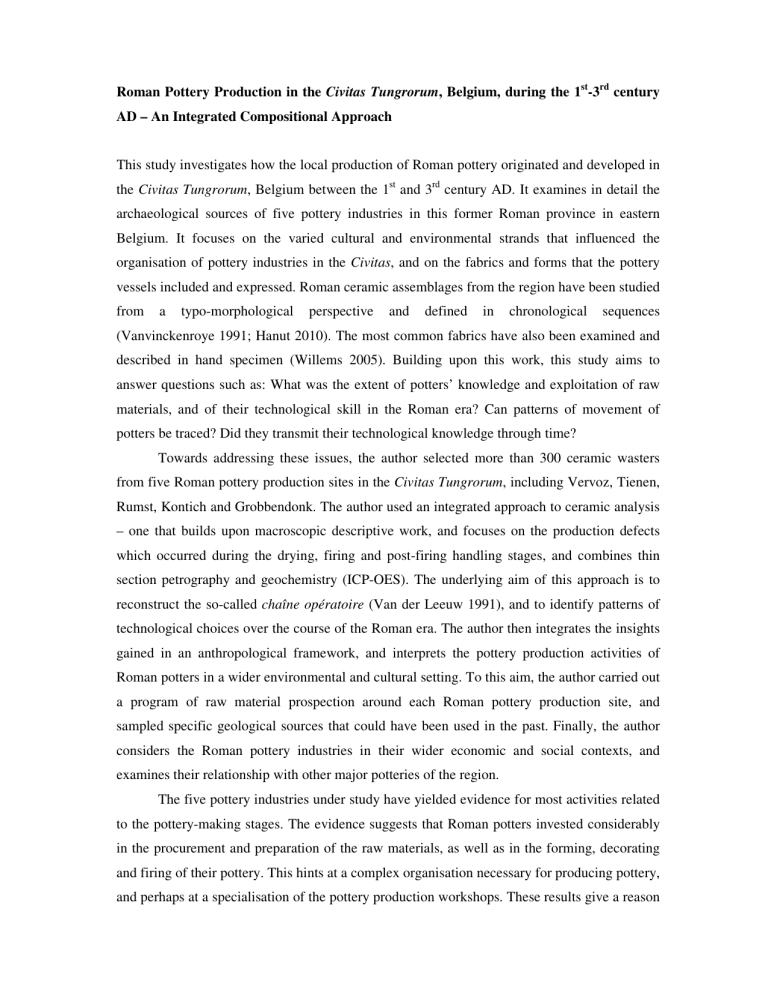
Roman Pottery Production in the Civitas Tungrorum, Belgium, during the 1st-3rd century
AD – An Integrated Compositional Approach
This study investigates how the local production of Roman pottery originated and developed in
the Civitas Tungrorum, Belgium between the 1st and 3rd century AD. It examines in detail the
archaeological sources of five pottery industries in this former Roman province in eastern
Belgium. It focuses on the varied cultural and environmental strands that influenced the
organisation of pottery industries in the Civitas, and on the fabrics and forms that the pottery
vessels included and expressed. Roman ceramic assemblages from the region have been studied
from
a
typo-morphological
perspective
and
defined
in
chronological
sequences
(Vanvinckenroye 1991; Hanut 2010). The most common fabrics have also been examined and
described in hand specimen (Willems 2005). Building upon this work, this study aims to
answer questions such as: What was the extent of potters’ knowledge and exploitation of raw
materials, and of their technological skill in the Roman era? Can patterns of movement of
potters be traced? Did they transmit their technological knowledge through time?
Towards addressing these issues, the author selected more than 300 ceramic wasters
from five Roman pottery production sites in the Civitas Tungrorum, including Vervoz, Tienen,
Rumst, Kontich and Grobbendonk. The author used an integrated approach to ceramic analysis
– one that builds upon macroscopic descriptive work, and focuses on the production defects
which occurred during the drying, firing and post-firing handling stages, and combines thin
section petrography and geochemistry (ICP-OES). The underlying aim of this approach is to
reconstruct the so-called chaîne opératoire (Van der Leeuw 1991), and to identify patterns of
technological choices over the course of the Roman era. The author then integrates the insights
gained in an anthropological framework, and interprets the pottery production activities of
Roman potters in a wider environmental and cultural setting. To this aim, the author carried out
a program of raw material prospection around each Roman pottery production site, and
sampled specific geological sources that could have been used in the past. Finally, the author
considers the Roman pottery industries in their wider economic and social contexts, and
examines their relationship with other major potteries of the region.
The five pottery industries under study have yielded evidence for most activities related
to the pottery-making stages. The evidence suggests that Roman potters invested considerably
in the procurement and preparation of the raw materials, as well as in the forming, decorating
and firing of their pottery. This hints at a complex organisation necessary for producing pottery,
and perhaps at a specialisation of the pottery production workshops. These results give a reason
to revise some received views which typically assumed that the significant production centres
of Roman pottery were located in the central region of the Civitas, compared to the few and
apparently isolated kiln sites in other areas of the Civitas (Peacock 1982; Hiddink 1991). The
results of this investigation have offered reasons for questioning such views: the potters,
working in the different regions of the Civitas, were a community involved in potting activities,
and they shared potting knowledge over space and time.
The results of this research further indicate that the potters in the Civitas Tungrorum not
only manifested and expressed changes in the choice of raw materials and technology, but also
consistency and continuity throughout the Roman era. They sourced the clayey raw materials at
c. 10 km from the production sites, and they procured the tempering materials, including grog,
limestone and sand, at the premises. Furthermore, they used three main ‘recipes’ for the
manufacture of specific types of vessels: a fine fabric for tableware, a sand tempered fabric for
cooking ware, and a grog or limestone tempered fabric for jars. The choice of clay had little
impact on the vessel shape, as illustrated by the fact that potters produced both fine and coarse
ware pottery with similar raw materials. In addition, the potters produced remarkably visually
homogeneous vessels, regardless of variations in local clay sources. This evidence is taken to
suggest that the potting groups were skilled, and they had a sophisticated knowledge of both the
available raw materials and of the potting techniques. Hence, they adopted distinct material and
social strategies. In particular, the Flavian period appears to have been a turning point,
suggesting that social, economic and political factors shaped Roman pottery production at that
time.
By placing regional ceramic compositional groups in the wider cultural and
environmental context, this study provides a firm basis with which to interpret aspects of
pottery production in this northern area of the Roman Empire.
Hoe ontstond en evolueerde in de eerste drie eeuwen van onze jaartelling de lokale productie
van Romeins aardewerk in de Civitas Tungrorum? Om die vraag te beantwoorden onderwerpt
dit proefschrift de archeologische bronnen van enkele productieplaatsen in die toenmalige
Romeinse provincie in oostelijk België aan een grondig onderzoek. Het gaat daarbij na hoe de
natuurlijke en de culturele omgeving invloed hadden op de organisatie van regionale
pottenbakkersateliers en op de baksels en de aardewerkvormen die men daar vervaardigde. De
diverse producten van dit regionaal Romeins aardewerk waren op basis van hun vorm eerder al
in een typologie gegroepeerd en daarbij ook relatief gedateerd (Vanvinckenroye 1991; Hanut
2010) en de meest voorkomende baksels waren ook al macroscopisch onderzocht en
beschreven (Willems 2005). Dit proefschrift bouwt hierop verder en tracht nieuwe
onderzoeksvragen te beantwoorden zoals: Welke grondstoffen gebruikten de pottenbakkers van
de Civitas Tungrorum voor de vervaardiging van Romeins aardewerk? Over welke kennis
beschikten ze en in welke mate gaven zij die kennis van hun ambacht door aan nieuwe
generaties pottenbakkers? Hoe sterk was de link tussen de verschillende regio’s? Kunnen
eventueel rondtrekkende pottenbakkers geïdentificeerd worden?
Om dergelijke vragen te beantwoorden onderzocht de doctoranda de misbaksels van vijf
pottenbakkerscentra uit de Civitas Tungrorum in detail, met name in Vervoz, Tienen, Rumst,
Kontich en Grobbendonk. Ze paste een geïntegreerde methode toe die vertrekt van
beschrijvend macroscopisch onderzoek van productiedefecten tijdens het drogen, bakken of
nabehandelen van het aardewerk, en die dit combineert met slijpplaatjesonderzoek en
chemische analyse (ICP-OES). Deze aanpak liet toe om de zogenaamde operationele keten
(chaîne opératoire) van het productieproces te reconstrueren (Van der Leeuw 1991), en om
patronen te identificeren in de technologische keuzes van de pottenbakkers binnen deze keten
en doorheen de Romeinse periode. De auteur plaatst de verworven inzichten vervolgens in een
antropologische context en kadert de productieactiviteiten van Romeinse pottenbakkers in de
bredere culturele en natuurlijke omgeving. Daarvoor bezocht en bemonsterde ze onder andere
verschillende kleilagen die dagzomen rond de Romeinse productiecentra, en selecteerde ze
specifieke grondstoffen die voor Romeinse aardewerkproductie gebruikt kunnen zijn geweest.
Tot slot plaatst ze de Romeinse productiecentra in een bredere socio-culturele en economische
context, en onderzoekt ze hun relatie met andere regionale productiecentra.
De verschillende activiteiten van Romeinse aardewerkproductie lieten bij de vijf
productiecentra voor dit onderzoek relevante sporen en relicten na in het archeologisch archief.
Daaruit blijkt dat de Romeinse pottenbakkers heel wat investeerden in de selectie en de
voorbereiding van grondstoffen, en in het nadraaien, decoreren en bakken van het Romeins
aardewerk. Succesvolle aardewerkproductie vergde dus een vrij complexe organisatie en
wellicht ook een specialisatie van de ateliers. Voorgaand onderzoek dat veronderstelde dat de
belangrijkste productiecentra louter in de centrale regio van de Civitas gesitueerd waren,
waarbij het in meer perifere regio’s slechts zou gaan om enkele geïsoleerde pottenbakkersovens
(Peacock 1982; Hiddink 1991), mag met de resultaten van dit proefschrift in vraag gesteld
worden: de pottenbakkers, die werkzaam waren in de verschillende regio’s van de Civitas,
vormden duidelijk een gemeenschap waarbij ze hun kennis over hoe en met welke grondstoffen
het aardewerk gemaakt moest worden blijkbaar intensief deelden.
De resultaten van dit onderzoek tonen verder aan dat de Romeinse pottenbakkers in de
Civitas Tungrorum doorheen de tijd naast veranderingen ook opmerkelijke consistentie en
continuïteit manifesteren in de keuze van grondstoffen en technieken. Ze exploiteerden hun klei
systematisch binnen een straal van ca. 10 km van de productieplaats, en ook de chamotte, zand
en kalksteen, die zij gebruikten als magering, zochten ze ter plaatse uit. Daarnaast gebruikten
de pottenbakkers drie ‘recepten’ voor de productie van specifieke vormen: een fijn baksel voor
tafelwaar, een met zand gemagerd baksel voor kookwaar, en tenslotte een met chamotte of
kalksteen gemagerd baksel voor grote potten. Het meest opmerkelijke is dat de Romeinse
pottenbakkers visueel homogeen aardewerk wisten te produceren dat ze in de verschillende
regio’s nochtans met verschillende grondstoffen maakten. Ze hanteerden dus bewust materiële
en sociale strategieën. De Flavische tijd blijkt daarbij een cruciale periode te zijn geweest,
waarin sociale, economische en politieke factoren Romeinse aardewerkproductie sterk
beïnvloed hebben.
Door regionale baksels in een bredere culturele en natuurlijke omgeving te plaatsen
biedt dit proefschrift een fundament voor de verdere interpretatie van aspecten van
aardewerkproductie in deze noordelijke contreien van het Romeinse Rijk.


